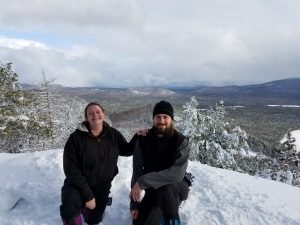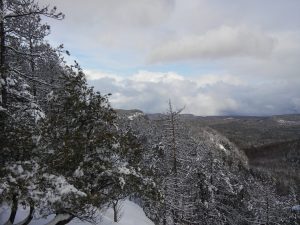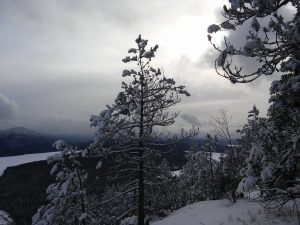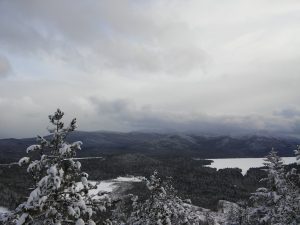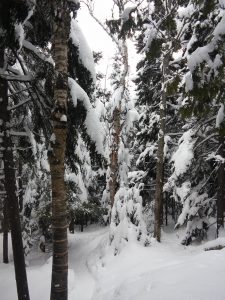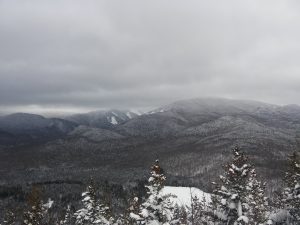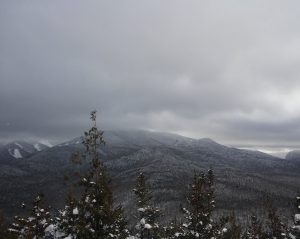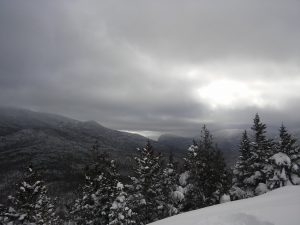Snowshoeing Small Peaks in the Adirondacks
Although I’m typically hesitant at first, snowshoeing is something I look forward to any time snow begins to accumulate.
At the end of February, Upstate New York experienced record high temperatures and I honestly wasn’t sure if my friends and I would have the opportunity to snowshoe in March, or if hiking was going to be a catastrophic mud event.
Living near the Southern Adirondacks, I imagined the woods behind my house would provide a fairly good estimate on how much snow would be in the mountains. My assumption was as long as there was snow in my yard, there would be plenty snow farther north.
Luckily, we ended up getting two substantial snow storms before we headed north. And a gentle snow fell most of the time we were in the mountains as well.
2018 Winter Cabin Getaway
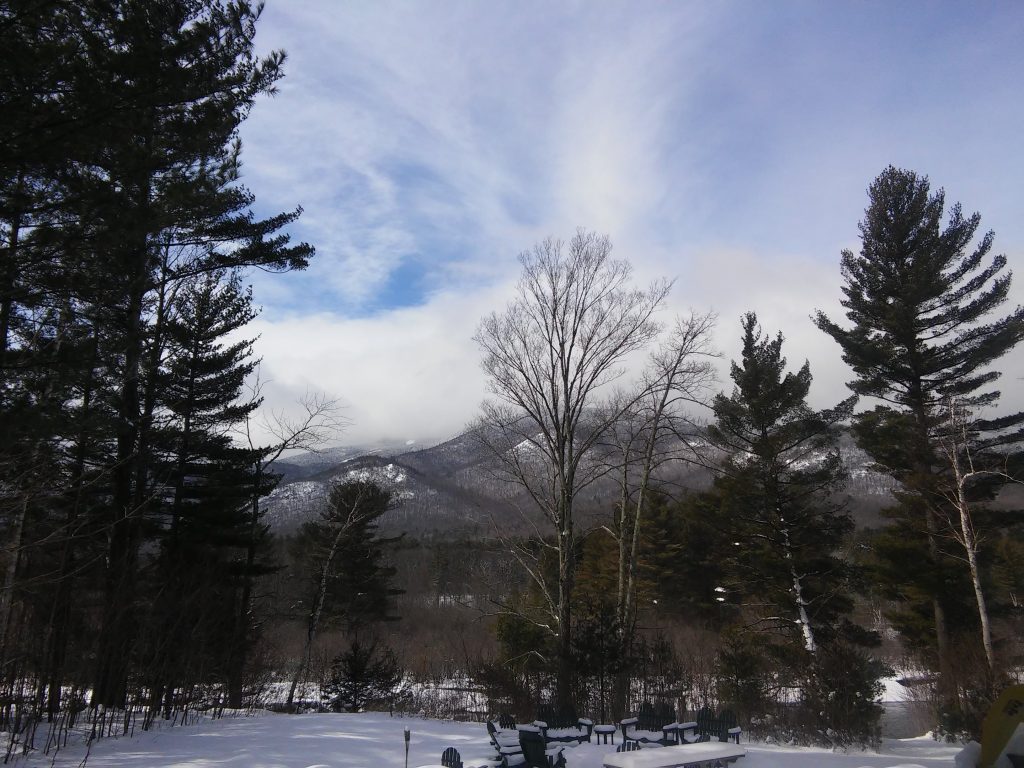
We stayed at the Otter Chalet next to the Adirondack Wildlife Refuge in Wilmington, NY.
There were 6 of us (Jim, Michelle, Rich, Ashley, Nathan & I).
For 5 of us it was our 3rd Winter Cabin Retreat (2nd in the Adirondacks).
Before checking in and settling down in our cabin we went on a “short” hike just north from where we would be staying.
A warm up hike.
A practice hike.
A hike to make sure all of our equipment was ready to use since we planned to tackle a High Peak the following day.
but things rarely go as planned when coordinating people and weather.
and although we didn’t summit an Adirondack High Peak as originally anticipated, we were able to summit two smaller mountains during our stay that were gratifying with breathtaking views.
The Ascent
The Adirondack Mountains are steep. Even hikes that claim to be “easy” based on distance are still considered “moderate” because of the terrain. Trails throughout the Adirondack Park seem to have steepness in common.
No matter the elevation, you begin an Adirondack hike by going up.
No meandering trails in valleys.
No gentle switchbacks up a cliff side.
It’s a high stepping, steep scramble over bare rock and exposed tree roots, exacerbated over time by erosion.
Modern trails tend to switchback up mountains and employ trail hardening techniques to minimize erosion. In the old days, however, trails were cut straight up steep slopes. Such trails can turn into streams during rainstorms. Due to erosion, the walking surface is often characterized by rocks, roots, and loose soil.
- Take time to fill out sign-in sheets at the beginning of trailheads. In order to get adequate funding for trail maintenance it is important to know how frequently trails are used and by how many people.
Silver Lake Mountain
March 9 – Black Brook, NY
Elevation: 2374’
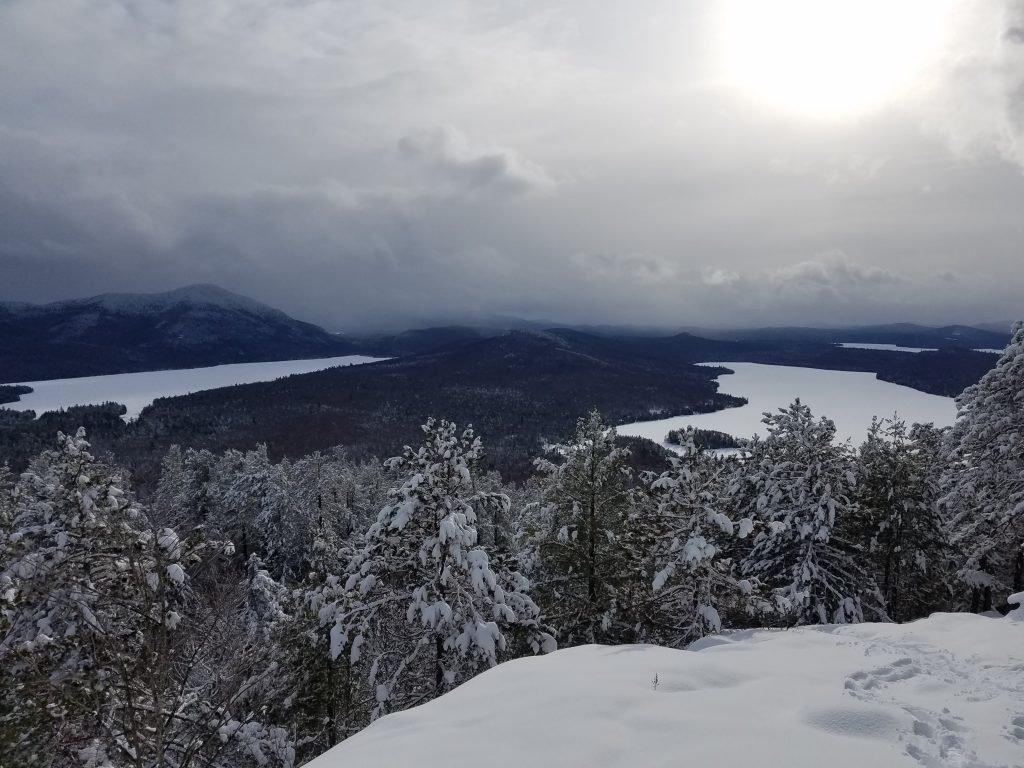
Admittedly the first hike, the “short” hike, was rough for me. After being holed up most of the winter with minimum physical activity, a 900’ ascent in under a mile had me full of complaints. My gaiters were too tight around my calves, I was wearing too many layers, and I couldn’t breathe from the immediate and constant uphill exertion.
Self-Reflection
I often feel inadequate when I compare myself to my hiking partners and believe I’m holding them back in some way. Trying to “keep up” becomes frustrating and I forget to enjoy the moment.
I had to remind myself that the view at the top is always worth it!
- Silver Lake Mountain Trail is recommended by the DEC. By suggesting less popular hikes, the DEC hopes to reduce erosion caused by heavy foot traffic on the more frequently visited trails.
Mt. Jo
March 10 – North Elba, NY
Elevation: 2876’
700’ ascent
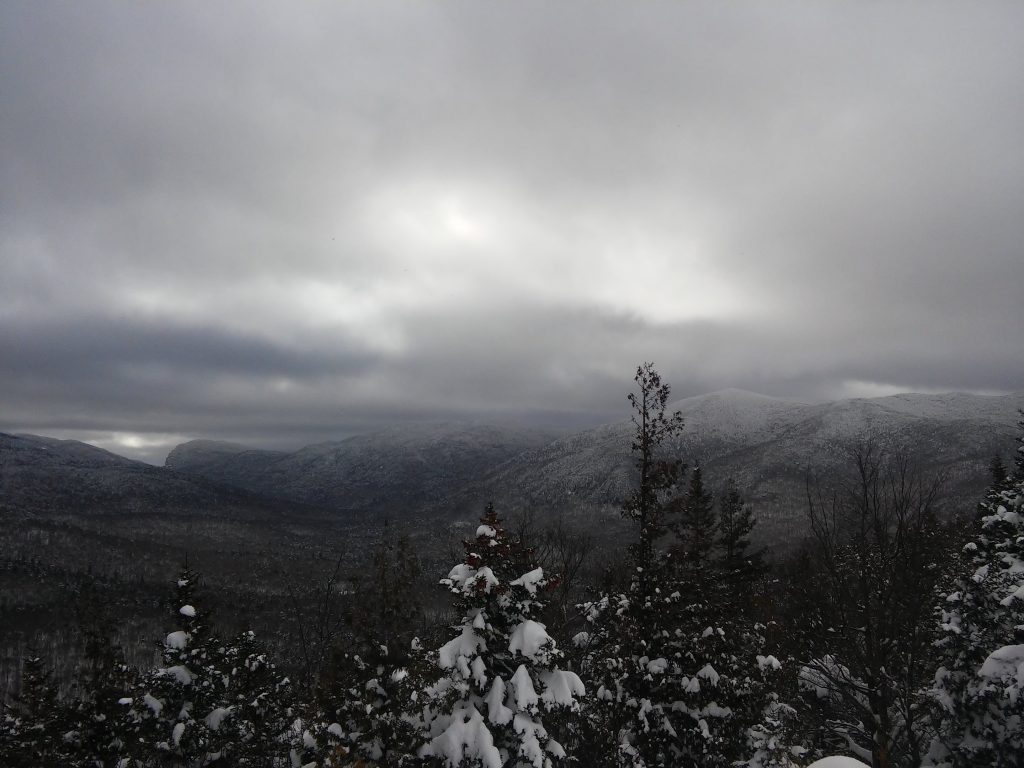
By the second hike I was ready to go up! Eager to do better at taking my time and enjoying myself.
I found myself deeply attracted to the history behind Mt. Jo.
Tragedy.
I read everything I could find on Jo and her beaux.
Trying to untangle fact from fiction after 141 years…
Tragic tales are what people tend to recite and seem eager to believe.
Was the story entirely made up? Spoken one starry autumn night as a campfire tale, dreamt up by a hopeless romantic, who lost his love in the mountains between Toronto and New York City.
September 1877
So the story goes, Josephine Schofield and Henry Van Hoevenberg met and were instantly enamored with each other. During their brief romance while camping in the Adirondack Mountains, Jo and Henry climbed the highest mountain together. From the summit of Mt. Marcy (highest peak in New York, elevation 5,343′) they looked down on a lake in the shape of a heart, and dreamed to build a home where they could live together in the mountains.
But summer nights always come to an end and Jo was promised to another.
Miss Schofield apparently jumped over Niagara Falls on October 15, 1877.
At 7:00 p.m. Miss Schofield arrived in Niagara Falls and sent a telegraph to her fiancé (Mr. Kelly) stating, “Trains do not connect. Can’t get home to-night. Am going crazy.”
At 7:30 p.m., she walked out to Goat Island, telling a man at the gate that she was “an artist, and wished to see the falls by moonlight.” The tall young lady dressed in black was never seen again.
Adirondack Roots: Stories of Hiking, History and Women, by Sandra Weber © 2011
It is said that Henry Van Hoevenberg never got over the loss of Jo. He never got married and he lived in the mountains the rest of his life. Henry built the original Adirondack Lodge in the location where he and Jo had dreamt of building their home, near the heart shaped lake. Henry also named Mt. Jo after his beloved, immortalizing her and their Adirondack romance forever.
- I honestly can’t imagine a better time of the year to summit Mt. Jo than the end of winter after a couple snow storms. It is one of the most visited small peaks in the Adirondacks because of its location near the Adirondack Loj at Heart Lake and the ADK’s High Peaks Information Center (HPIC). I’ve read several write-ups about hiking in this area and because of its main attraction (Mt. Marcy via the Van Hoevenberg Trail) and being close to Lake Placid the trails can be crowded and parking isn’t always easy to find.
